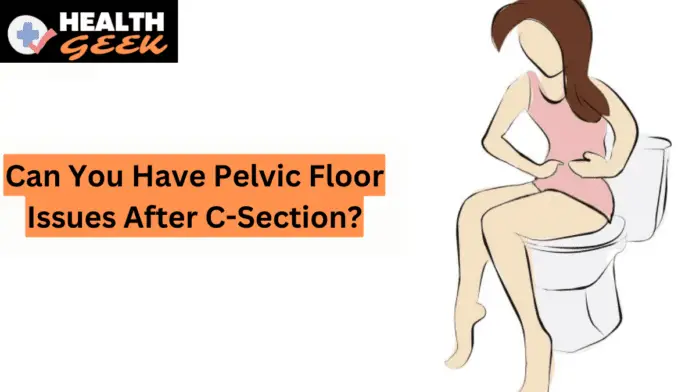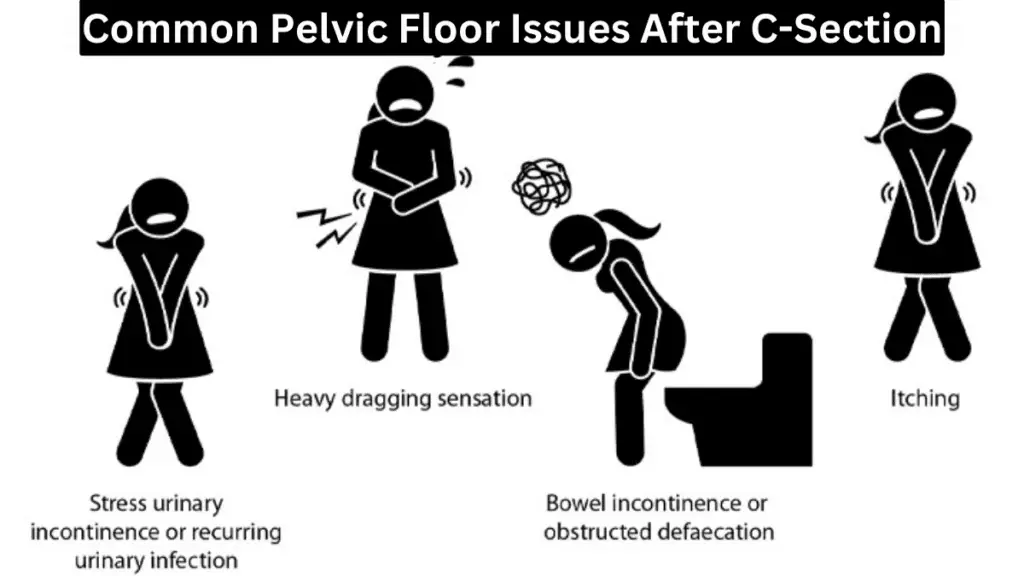
Having a baby is one of the most exciting and life-changing events that can happen to a woman. However, it can also be a very stressful time for both mother and baby. One of the biggest concerns for new mothers is pelvic floor issues after c-section. While many women are aware of the potential risks associated with vaginal delivery, few consider the possibility of pelvic floor issues after c-section.
What Are Pelvic Floor Disorders?
The pelvic floor is a group of muscles and ligaments located at the base of the pelvis. These muscles support organs such as the bladder and uterus and help control urinary and fecal continence. When these muscles become weakened or damaged due to childbirth or other factors, it can lead to what is known as “pelvic floor disorders” (PFDs). Common PFDs include urinary incontinence, fecal incontinence, pelvic organ prolapse, pain with sexual activity, and scar pain from C-sections.
Can You Have Pelvic Floor Issues After C-Section?
Yes, you can have pelvic floor issues after a C-section. Pelvic floor issues are usually associated with vaginal deliveries, but even a C-section can lead to pelvic floor problems. During a C-section, the surgeon cuts through the abdominal muscles and the uterus to deliver the baby. This procedure can weaken the pelvic floor muscles and cause problems later.
How Does Delivery Method Affect Pelvic Floor Health?
Several recent studies have shown that pelvic muscle strength is poorer after vaginal versus cesarean birth. Also, a recent study of parous women more than 6 years after their last delivery found that those who had delivered via C-section were less likely to experience PFDs than those who had delivered vaginally. This suggests that a c-section may be protective against PFDs in some cases. However, it’s important to note that this doesn’t mean all women who deliver via C-section will be spared from PFDs; there are still risks associated with this type of delivery.
Debunking The Myth That A C-Section Can Prevent Pelvic Floor Dysfunction
It’s important to note that having a C-section does not guarantee protection against PFDs later on in life; rather it simply reduces your risk compared with vaginal delivery. Additionally, it’s important for women who have had a cesarean section to be aware of potential risks associated with this type of delivery so they can take steps to reduce their risk if needed. For example, engaging in regular exercise during pregnancy has been shown to reduce the risk of developing PFDs regardless of the delivery method
Common Pelvic Floor Issues After C-Section

Urinary Incontinence
Urinary incontinence is one of the most common problems associated with weakened pelvic floor muscles after a c-section. This condition occurs when urine leaks out unexpectedly due to weakened muscles in the bladder area. Fecal incontinence is another issue that can occur after a c-section; this happens when stool leaks out unexpectedly due to weakened muscles in the rectum area. Both of these conditions can be embarrassing and uncomfortable for women who experience them.
Pelvic Organ Prolapse
Pelvic organ prolapse is another common pelvic floor issue that can occur after a C-section. It happens when the pelvic organs, such as the bladder, uterus, or rectum, push against the weakened pelvic floor muscles and descend into the vaginal canal. This can cause discomfort, pain, and urinary or bowel problems.
Sexual Dysfunction
Sexual dysfunction is also a common issue that can arise after a C-section. It refers to a range of conditions that affect sexual health, such as pain during intercourse or decreased arousal. The weakening of the pelvic floor muscles after a C-section can make it difficult to have satisfying sex.
How to Manage Pelvic Floor Issues After a C-Section
The good news is that pelvic floor issues after a C-section can be managed with lifestyle changes, pelvic floor exercises, and, in some cases, surgery. Here’s what you can do to manage pelvic floor issues after a C-section.
Exercise
Regular exercise helps strengthen your core muscles, which support your pelvis and help keep your organs in place. This includes exercises like squats, bridges, planks, leg lifts, etc., which target your abdominal and back muscles specifically but also work on strengthening your entire core overall. Additionally, Kegel exercises are great for strengthening your pelvic floor muscles; these involve contracting and releasing your PC muscle repeatedly throughout each day, which helps build strength over time.
Physical Therapy
Physical therapy is an excellent way to help strengthen your core and improve posture which will help reduce strain on your pelvic area; it also helps with relaxation techniques which will reduce stress levels that could be contributing to any existing issues you may have with your pelvis/pelvic floor muscles already present before pregnancy or labor/delivery related trauma occurred. Additionally, physical therapists are trained professionals who specialize in treating musculoskeletal conditions, so they’re able to provide specific advice tailored towards helping you manage any current symptoms related directly or indirectly to pregnancy or birth-related trauma, such as urinary or fecal incontinence or pain during intercourse.
Diet & Nutrition
Eating healthy foods rich in fiber will help keep things moving through your digestive system properly so there’s less pressure placed on your lower abdomen/pelvis area from excessive straining while trying to pass stool; additionally drinking plenty of water throughout each day will help keep things moving along smoothly too! Eating foods high in calcium will also help strengthen bones throughout the body, including those found within our pelvis region, thus helping reduce the risk of developing any type of osteoporosis later down the road too! Lastly, avoiding smoking and alcohol consumption altogether would be beneficial since both substances tend to weaken our bodies overall, making us more susceptible to developing various types of health problems, including those involving our pelvis region specifically!
Surgery
In some cases where all other treatments fail then surgery may be necessary depending on the severity situation at hand; however, this should only ever be used last resort since its usually very invasive nature comes with its own set risks and side effects that need to be taken into consideration prior undergoing procedure itself!
Bottom Line
It’s important for women who have had a c-section to be aware of their risk for developing pelvic floor issues afterward so they can take steps towards preventing them from occurring or treating them if they do arise. Regular exercise such as Kegel exercises combined with physical therapy sessions focusing on strengthening core postural awareness techniques is a great way towards helping reduce the risk associated with developing any type of dysfunction within our pelvis region following delivery via Cesarean section! Additionally eating a healthy diet full of fiber-rich foods along with avoiding smoking and alcohol consumption altogether would also be beneficial in reducing chances of experiencing any type of health problem involving our pelvis region specifically! Lastly, if all else fails then surgery may be necessary depending severity situation at hand, however, should only ever be used last resort since it’s usually very invasive in nature and comes with its own set of risk side effects that need to be taken into consideration prior to undergoing procedure itself!












